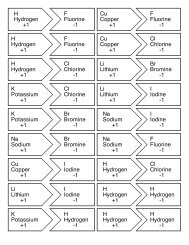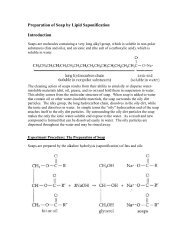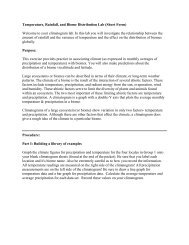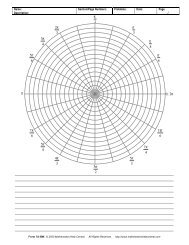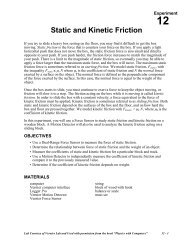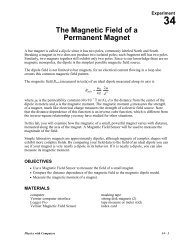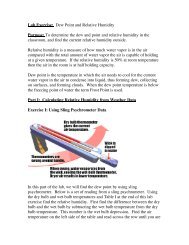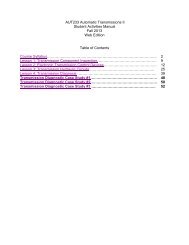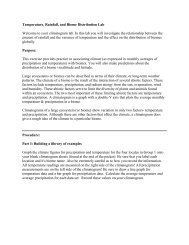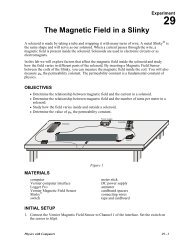30 Pressure and Volume Web Ver I - Faculty Webs
30 Pressure and Volume Web Ver I - Faculty Webs
30 Pressure and Volume Web Ver I - Faculty Webs
You also want an ePaper? Increase the reach of your titles
YUMPU automatically turns print PDFs into web optimized ePapers that Google loves.
Computer <strong>30</strong><br />
PROCEDURE<br />
1. Prepare the Gas <strong>Pressure</strong> Sensor <strong>and</strong> an air sample for data collection.<br />
a. Connect the Gas <strong>Pressure</strong> Sensor to the computer interface.<br />
b. With the 20 mL syringe disconnected from the Gas <strong>Pressure</strong> Sensor, move the piston of<br />
the syringe until the front edge of the inside black ring is positioned at the 10.0 mL mark.<br />
c. Attach the 20 mL syringe to the valve of the Gas <strong>Pressure</strong> Sensor.<br />
2. Prepare the computer for data collection by opening the file “<strong>30</strong> <strong>Pressure</strong> <strong>and</strong> <strong>Volume</strong>” from<br />
the Physical Science w <strong>Ver</strong>nier folder.<br />
3. Click to begin data collection.<br />
4. Collect the pressure vs. volume data. It is best for one person to take care of the gas syringe<br />
<strong>and</strong> for another to operate the computer.<br />
a. Move the piston to position the front edge of the inside black ring (see Figure 2) at the<br />
5.0 mL line on the syringe. Hold the piston firmly in this position until the pressure value<br />
stabilizes.<br />
Figure 2<br />
b. When the pressure reading has stabilized, click . Type 5.0 in the edit box. Press the<br />
ENTER key to keep this data pair. Note: You can choose to redo a point by pressing the<br />
ESC key (after clicking , but before entering a value).<br />
c. Continue the procedure for volumes of 7.5, 10.0, 12.5, 15.0, 17.5, <strong>and</strong> 20.0 mL.<br />
d. Click when you have finished collecting data.<br />
5. In your data table, record the pressure <strong>and</strong> volume data pairs displayed in the table (or, if<br />
directed by your instructor, print a copy of the table).<br />
6. Examine the graph of pressure vs. volume. Based on this graph, decide what kind of<br />
mathematical relationship you think exists between these two variables, direct or inverse. To<br />
see if you made the right choice:<br />
a. Click the Curve Fit button, .<br />
b. Choose Variable Power from the list at the lower left. Enter the power in the Power edit<br />
box that represents the relationship shown in the graph (e.g., type 1 if direct, –1 if<br />
inverse). Click .<br />
<strong>30</strong> - 2 Physical Science with <strong>Ver</strong>nier




